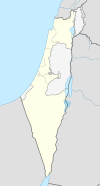| Revision as of 15:36, 5 November 2014 view sourceIgorp lj (talk | contribs)Extended confirmed users1,818 edits Undid revision 632554536 by Engr.yaseeniqbal (talk) see Palestine (disambiguation)← Previous edit | Revision as of 14:27, 16 November 2014 view source Infantom (talk | contribs)Extended confirmed users1,198 edits added Category:Land of Israel using HotCatNext edit → | ||
| Line 306: | Line 306: | ||
| ] | ] | ||
| ] | ] | ||
| ] | |||
Revision as of 14:27, 16 November 2014
This article is about the historical geographic region. For the sovereign state (country), see State of Palestine. For the West Bank and the Gaza Strip, see Palestinian territories. For other uses, see Palestine (disambiguation).
 class=notpageimage| Boundaries of Roman Syria Palaestina, where dashed green line shows the boundary between Byzantine Palaestina Prima (later Jund Filastin) and Palaestina Secunda (later Jund al-Urdunn), as well as Palaestina Salutaris (later Jebel et-Tih and the Jifar)
Borders of Mandatory Palestine
Borders of the State of Palestine (West Bank and Gaza Strip)
class=notpageimage| Boundaries of Roman Syria Palaestina, where dashed green line shows the boundary between Byzantine Palaestina Prima (later Jund Filastin) and Palaestina Secunda (later Jund al-Urdunn), as well as Palaestina Salutaris (later Jebel et-Tih and the Jifar)
Borders of Mandatory Palestine
Borders of the State of Palestine (West Bank and Gaza Strip)
Palestine (Template:Lang-ar Filasṭīn, Falasṭīn, Filisṭīn; Template:Lang-el, Palaistinē; Template:Lang-la; Hebrew: פלשתינה Palestina) is a geographic region in Western Asia between the Mediterranean Sea and the Jordan River. It is sometimes considered to include adjoining territories. The name was used by Ancient Greek writers, and was later used for the Roman province Syria Palaestina, the Byzantine Palaestina Prima and the Umayyad and Abbasid province of Jund Filastin. The region is also known as the Land of Israel (Hebrew: ארץ־ישראל Eretz-Yisra'el), the Holy Land or Promised Land, and historically has been known as the Southern portion of wider regional designations such as the Levant, Canaan, Syria and as-Sham.
Situated at a strategic location between Egypt, Syria and Arabia, and the birthplace of Judaism and Christianity, the region has a long and tumultuous history as a crossroads for religion, culture, commerce, and politics. The region has been controlled by numerous peoples, including Ancient Egyptians, Canaanites, Israelites, Assyrians, Babylonians, Persians, Ancient Greeks, Romans, Byzantines, the Sunni Arab Caliphates, the Shia Fatimid Caliphate, Crusaders, Ayyubids, Mameluks, Ottomans, the British and modern Israelis and Palestinians.
The boundaries of the region have changed throughout history. The modern definition of the region was fixed in the North and East by the 1920-23 Paulet–Newcombe Agreement and British Mandate for Palestine, and on the South by the 1906 Turco-Egyptian boundary agreement. Today, the region comprises the State of Israel and Palestinian territories in which the State of Palestine was declared.
Etymology
Further information: Timeline of the name "Palestine"The term "Peleset" (transliterated from hieroglyphs as P-r-s-t) is found in five inscriptions referring to a neighboring people or land starting from c.1150 BCE during the Twentieth dynasty of Egypt. The first known mention is at the temple at Medinet Habu which refers to the Peleset among those who fought with Egypt in Ramesses III's reign, and the last known is 300 years later on Padiiset's Statue. The Assyrians called the same region "Palashtu" or "Pilistu", beginning with Adad-nirari III in the Nimrud Slab in c.800 BCE through to an Esarhaddon treaty more than a century later. Neither the Egyptian nor the Assyrian sources provided clear regional boundaries for the term.
The first clear use of the term Palestine to refer to the entire area between Phoenicia and Egypt was in 5th century BC Ancient Greece, when Herodotus wrote of a 'district of Syria, called Palaistinê" in The Histories, which included the Judean mountains and the Jordan Rift Valley. Approximately a century later, Aristotle used a similar definition for the region in Meteorology, in which he included the Dead Sea. Later Greek writers such as Polemon and Pausanias also used the term to refer to the same region, which was followed by Roman writers such as Ovid, Tibullus, Pomponius Mela, Pliny the Elder, Dio Chrysostom, Statius, Plutarch as well as Roman Judean writers Philo of Alexandria and Josephus. Other writers, such as Strabo, referred to the region as Coele-Syria ("all Syria") around 10-20 CE. The term was first used to denote an official province in c.135 CE, when the Roman authorities, following the suppression of the Bar Kokhba Revolt, combined Iudaea Province with Galilee and the Paralia to form "Syria Palaestina". There is circumstantial evidence linking Hadrian with the name change, but the precise date is not certain and the assertion of some scholars that the name change was intended "to complete the dissociation with Judaea" is disputed.
The term is generally accepted to be a translation of the Biblical name Peleshet (פלשת Pəlésheth, usually transliterated as Philistia). The term and its derivates are used more than 250 times in Masoretic-derived versions of the Hebrew Bible, of which 10 uses are in the Torah, with undefined boundaries, and almost 200 of the remaining references are in the Book of Judges and the Books of Samuel. The term is rarely used in the Septuagint, who used a transliteration Land of Phylistieim (Γη των Φυλιστιειμ) different from the contemporary Greek place name Palaistínē (Παλαιστίνη). The Septuagint instead used the term "allophuloi" (Αλλόφυλοι, "other nations") throughout the Books of Judges and Samuel, such that the term "Philistines" has been interpreted to mean "non-Israelites of the Promised Land" when used in the context of Samson, Saul and David, and Rabbinic sources explain that these peoples were different from the Philistines of the Book of Genesis.
During the Byzantine period, the region of Palestine within Syria Palaestina was subdivided into Palaestina Prima and Secunda, and an area of land including the Negev and Sinai became Palaestina Salutaris. Following the Muslim conquest, place names that were in use by the Byzantine administration generally continued to be used in Arabic. The use of the name "Palestine" became common in Early Modern English, was used in English and Arabic during the Mutasarrifate of Jerusalem and was revived as an official place name with the British Mandate for Palestine.
Some other terms that have been used to refer to all or part of this land include Canaan, Greater Israel, Greater Syria, the Holy Land, Iudaea Province, Judea, Israel, "Israel HaShlema", Kingdom of Israel, Kingdom of Jerusalem, Land of Israel (Eretz Yisrael or Ha'aretz), Zion, Retenu (Ancient Egyptian), Southern Syria, Southern Levant and Syria Palaestina.
History
Main article: History of Palestine Further information: Time periods in the region of PalestineOverview
Situated at a strategic location between Egypt, Syria and Arabia, and the birthplace of Judaism and Christianity, the region has a long and tumultuous history as a crossroads for religion, culture, commerce, and politics. The region has been controlled by numerous peoples, including Ancient Egyptians, Canaanites, Israelites, Assyrians, Babylonians, Persians, Ancient Greeks, Romans, Byzantines, the Sunni Arab Caliphates, the Shia Fatimid Caliphate, Crusaders, Ayyubids, Mameluks, Ottomans, the British and modern Israelis and Palestinians. Modern archaeologists and historians of the region refer to their field of study as Syro-Palestinian archaeology.

Ancient period

The region was among the earliest in the world to see human habitation, agricultural communities and civilization. During the Bronze Age, independent Canaanite city-states were established, and were influenced by the surrounding civilizations of ancient Egypt, Mesopotamia, Phoenicia, Minoan Crete, and Syria. Between 1550–1400 BCE, the Canaanite cities became vassals to the Egyptian New Kingdom who held power until the 1178 BCE Battle of Djahy (Canaan) during the wider Bronze Age collapse. The Philistines arrived and mingled with the local population, and according to Biblical tradition, the United Kingdom of Israel was established in 1020 BCE and separated within a century to form the northern Kingdom of Israel, and the southern Kingdom of Judah. Modern archaeologists dispute parts of the Biblical tradition, the latest thinking being that the Israelites emerged from a dramatic social transformation that took place in the people of the central hill country of Canaan around 1200 BCE, with no signs of violent invasion or even of peaceful infiltration of a clearly defined ethnic group from elsewhere.
The region became part of the Neo-Assyrian Empire from c. 740 BCE, which was itself replaced by the Neo-Babylonian Empire in c. 627 BCE. According to the Bible, a war with Egypt culminated in 586 BCE when Jerusalem was destroyed by the Babylonian king Nebuchadnezzar II and the local leaders of the region of Judea were deported to Babylonia. In 539 BCE, the Babylonian empire was replaced by the Achaemenid Empire. According to the Bible and implications from the Cyrus Cylinder, the exiled population of Judea was allowed to return to Jerusalem.
Classical antiquity

In the 330s BCE, Macedonian ruler Alexander the Great conquered the region, which changed hands several times during the wars of the Diadochi and later Syrian Wars. It ultimately fell to the Seleucid Empire between 219–200 BCE. In 116 BCE, a Seleucid civil war resulted in the independence of certain regions including the Hasmonean principality in the Judaean Mountains. From 110 BCE, the Hasmoneans extended their authority over much of Palestine, creating a Judaean–Samaritan–Idumaean–Ituraean–Galilean alliance. The Judaean (Jewish, see Ioudaioi) control over the wider region resulted in it also becoming known as Judaea, a term that had previously only referred to the smaller region of the Judaean Mountains. Between 73–63 BCE, the Roman Republic extended its influence into the region in the Third Mithridatic War, conquering Judea in 63 BCE, and splitting the former Hasmonean Kingdom into five districts. The three-year Ministry of Jesus, culminating in his crucifixion, is estimated to have occurred from 28–30 CE, although the historicity of Jesus is disputed by a minority of scholars. In 70 CE, Titus sacked Jerusalem, resulting in the dispersal of the city's Jews and Christians to Yavne and Pella. In 132 CE, Hadrian joined the province of Iudaea with Galilee to form new province of Syria Palaestina, and Jerusalem was renamed "Aelia Capitolina". Between 259–272, the region fell under the rule of Odaenathus as King of the Palmyrene Empire. Following the victory of Christian emperor Constantine in the Civil wars of the Tetrarchy, the Christianization of the Roman Empire began, and in 326, Constantine's mother Saint Helena visited Jerusalem and began the construction of churches and shrines. Palestine became a center of Christianity, attracting numerous monks and religious scholars. The Samaritan Revolts during this period caused their near extinction. In 614 CE, Palestine was annexed by another Persian dynasty; the Sassanids, until returning to Byzantine control in 628 CE.
Middle Ages
 The Dome of the Rock, the world's first great work of Islamic architecture, constructed in 691.
The Dome of the Rock, the world's first great work of Islamic architecture, constructed in 691. Minaret of the White Mosque in Ramla, constructed in 1318Arab architecture in the Middle Ages
Minaret of the White Mosque in Ramla, constructed in 1318Arab architecture in the Middle AgesPalestine was conquered by the Islamic Empire, beginning in 634 CE. In 636 CE, the Battle of Yarmouk during the Muslim conquest of Syria marked the new Muslim hegemony over the region, which was classified as Bilâd al-Shâm (Greater Syria). The majority of the population was Christian and was to remain so until the conquest of Saladin in 1187. The invasion appears to have had little impact on social and administrative continuities for several decades. The word 'Arab' at the time referred predominantly to Bedouin nomads, though Arab settlement is attested in the Judean highlands and near Jerusalem by the 5th century, and some tribes had converted to Christianity. The local population engaged in farming, which was considered demeaning, were called Nabaț, referring to Aramaic-speaking villagers. An ḥadīth, brought in the name of a Muslim freedman who settled in Palestine ordered them not to settle in the villages, for he who abides in villages it is as if he abides in graves.' In 661 CE, with the assassination of Ali, Muawiyah I became the uncontested Caliph of the Islamic World after being crowned in Jerusalem. The Dome of the Rock, completed in 691, was the world's first great work of Islamic architecture. The Umayyads, who had spurred a strong economic resurgence in the area, were replaced by the Abbasids in 750. Ramla, the major city, became the administrative centre for the following centuries. Tiberias became a thriving centre of Muslim scholarship. From 878, Palestine was ruled from Egypt by semi-autonomous rulers for almost a century, beginning with the Turkish freeman Ahmad ibn Tulun, for whom both Jews and Christians prayed when he lay dying and ending with the Ikhshidid rulers, characterized by persecution of Christians as the threat from Byzantium grew. The Fatimids, with a predominantly Berber army, invaded the region in 970, a date that marks the beginning of a period of unceasing warfare between numerous enemies, which destroyed Palestine, and in particular devastating its Jewish population.

In 1073, Palestine was captured by the Great Seljuq Empire, only to be recaptured by the Fatimids in 1098, who then lost the region to the Crusaders in 1099. Their control of Jerusalem and most of Palestine lasted almost a century until defeat by Saladin's forces in 1187, after which most of Palestine was controlled by the Ayyubids. A rump crusader state in the northern coastal cities survived for another century, but, despite seven further crusades, the crusaders were no longer a significant power in the region. The Fourth Crusade led directly to the decline of the Byzantine Empire, dramatically reducing Christian influence throughout the region.
The Mamluk Sultanate was indirectly created in Egypt as a result of the Seventh Crusade. The Mongol Empire reached Palestine for the first time in 1260, beginning with the Mongol raids into Palestine under Nestorian Christian general Kitbuqa, and reaching an apex at the pivotal Battle of Ain Jalut. In 1486, hostilities broke out between the Mamluks and the Ottoman Turks in a battle for control over western Asia, and the Ottomans captured Palestine in 1516.
Modern period
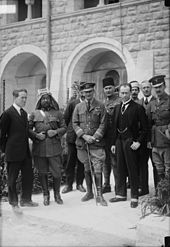

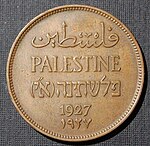 Palestine passport and Palestine coin from Mandatory Palestine
Palestine passport and Palestine coin from Mandatory Palestine
In 1830, on the eve of Muhammad Ali's invasion, the Ottoman Porte transferred control of the sanjaks of Jerusalem and Nablus to Abdullah Pasha, the governor of Acre. According to Silverburg, in regional and cultural terms this move was important for creating an Arab Palestine detached from Syria (bilad al-Shams). According to Pappe, it was an attempt to reinforce the Syrian front in face of Muhammad Ali's invasion. Two years later, in 1832, Palestine was conquered by Muhammad Ali's Egypt, but in 1840, Britain intervened and returned control of the Levant to the Ottomans in return for further capitulations. The end of the 19th century saw the beginning of Zionist immigration and the Revival of the Hebrew language. The movement was publicly supported by Great Britain during World War I with the Balfour Declaration of 1917.
The British began their Sinai and Palestine Campaign in 1915. The war reached southern Palestine in 1917, progressing to Gaza and around Jerusalem by the end of the year. The British secured Jerusalem in December 1917. They moved into the Jordan valley in 1918 and a campaign by the Entente into northern Palestine led to victory at Megiddo in September.
The British were formally awarded the mandate to govern the region in 1922. The non-Jewish Palestinians revolted in 1920, 1929, and 1936. In 1947, following World War II and The Holocaust, the British Government announced its desire to terminate the Mandate, and the United Nations General Assembly adopted a resolution recommending partition into an Arab state, a Jewish state and the Special International Regime for the City of Jerusalem. The Jewish leadership accepted the proposal, but the Arab Higher Committee rejected it; a civil war began immediately, and the establishment of the State of Israel was declared in 1948.
Following what is known as the 1948 Palestinian exodus, the 700,000 Palestinians who fled or were driven from their homes were unable to return following the Lausanne Conference of 1949. In the 1948 Arab–Israeli War, Israel captured and incorporated a further 26% of the Mandate territory, Jordan captured the region today known as the West Bank and the Gaza Strip was captured by Egypt. In the course of the Six-Day War in June 1967, Israel captured the rest of Mandate Palestine from Jordan and Egypt, and began a policy of Israeli settlements. From 1987 to 1993, the First Palestinian Intifada against Israel took place, which included the Declaration of the State of Palestine in 1988 and ended with the 1993 Oslo Peace Accords. In 2000, the Second or Al-Aqsa Intifada began, and Israel built a security barrier. Following Israel's unilateral disengagement plan of 2004, it withdrew all settlers and most of the military presence from the Gaza strip, but maintained control of the air space and coast. In 2012, the State of Palestine replaced the PLO as UN observer following United Nations General Assembly resolution 67/19.
Modern evolution of Palestine 1916–1922 various proposals: Three proposals for the post World War I administration of Palestine. The red line is the "International Administration" proposed in the 1916 Sykes–Picot Agreement, the dashed blue line is the 1919 Zionist Organization proposal at the Paris Peace Conference, and the thin blue line refers to the final borders of the 1923–48 Mandatory Palestine.
1916–1922 various proposals: Three proposals for the post World War I administration of Palestine. The red line is the "International Administration" proposed in the 1916 Sykes–Picot Agreement, the dashed blue line is the 1919 Zionist Organization proposal at the Paris Peace Conference, and the thin blue line refers to the final borders of the 1923–48 Mandatory Palestine.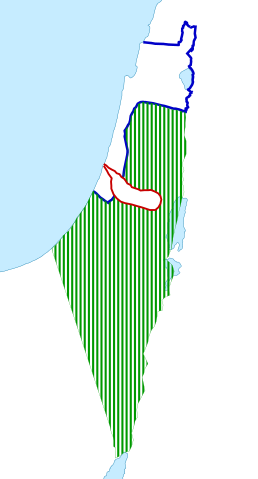 1937 British proposal: The first official proposal for partition, published in 1937 by the Peel Commission. An ongoing British Mandate was proposed to keep "the sanctity of Jerusalem and Bethlehem", in the form of an enclave from Jerusalem to Jaffa, including Lydda and Ramle.
1937 British proposal: The first official proposal for partition, published in 1937 by the Peel Commission. An ongoing British Mandate was proposed to keep "the sanctity of Jerusalem and Bethlehem", in the form of an enclave from Jerusalem to Jaffa, including Lydda and Ramle.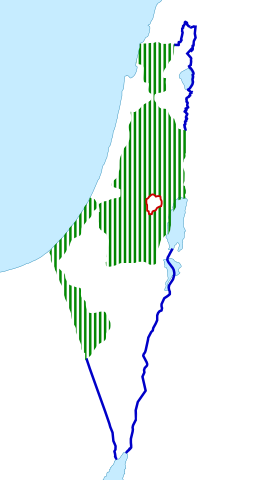 1947 UN proposal: Proposal per the United Nations Partition Plan for Palestine (UN General Assembly Resolution 181 (II), 1947), prior to the 1948 Arab–Israeli War. The proposal included a Corpus Separatum for Jerusalem, extraterritorial crossroads between the non-contiguous areas, and Jaffa as an Arab exclave.
1947 UN proposal: Proposal per the United Nations Partition Plan for Palestine (UN General Assembly Resolution 181 (II), 1947), prior to the 1948 Arab–Israeli War. The proposal included a Corpus Separatum for Jerusalem, extraterritorial crossroads between the non-contiguous areas, and Jaffa as an Arab exclave.
 1947 Jewish private land ownership: Jewish-owned lands in Mandatory Palestine as of 1947 in blue, constituting 7.4% of the total land area, of which more than half was held by the JNF and PICA. White is either public land or Palestinian-Arab-owned lands including related religious trusts.
1947 Jewish private land ownership: Jewish-owned lands in Mandatory Palestine as of 1947 in blue, constituting 7.4% of the total land area, of which more than half was held by the JNF and PICA. White is either public land or Palestinian-Arab-owned lands including related religious trusts.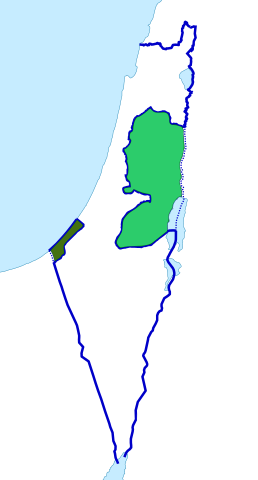 1949 armistice lines: The Jordanian-annexed West Bank (light green) and Egyptian client state All-Palestine Protectorate (dark green), after the 1948 Arab–Israeli War, showing 1949 armistice lines.
1949 armistice lines: The Jordanian-annexed West Bank (light green) and Egyptian client state All-Palestine Protectorate (dark green), after the 1948 Arab–Israeli War, showing 1949 armistice lines.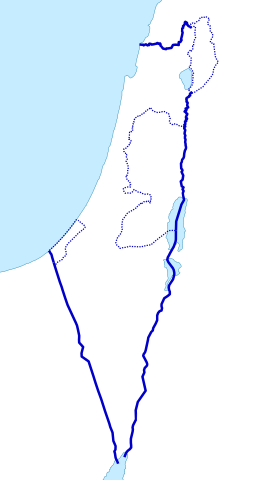 1967 territorial changes: During the Six-Day War, Israel captured the West Bank, the Gaza Strip, and the Golan Heights, together with the Sinai Peninsula (later traded for peace after the Yom Kippur War). In 1980–81 Israel annexed East Jerusalem and the Golan Heights.
Neither Israel's annexation nor the PLO claim over East Jerusalem gained international recognition.
1967 territorial changes: During the Six-Day War, Israel captured the West Bank, the Gaza Strip, and the Golan Heights, together with the Sinai Peninsula (later traded for peace after the Yom Kippur War). In 1980–81 Israel annexed East Jerusalem and the Golan Heights.
Neither Israel's annexation nor the PLO claim over East Jerusalem gained international recognition.
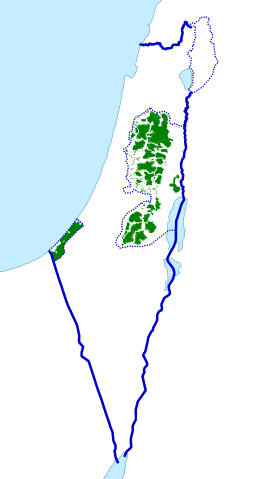 1995 Oslo II Accord: Under the Oslo Accords, the Palestinian National Authority was created to provide a Palestinian interim self-government in the West Bank and the interior of the Gaza Strip. Its second phase envisioned "Palestinian enclaves".
1995 Oslo II Accord: Under the Oslo Accords, the Palestinian National Authority was created to provide a Palestinian interim self-government in the West Bank and the interior of the Gaza Strip. Its second phase envisioned "Palestinian enclaves".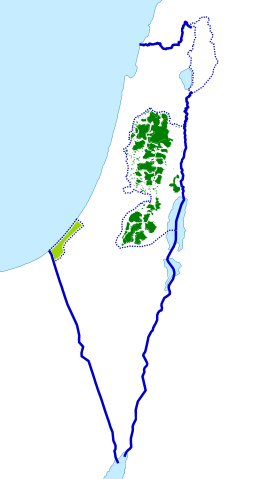 2005–present: After the Israeli disengagement from Gaza and clashes between the two main Palestinian parties following the Hamas electoral victory, two separate executive governments took control in the Palestinian territories of the West Bank and Gaza.
2005–present: After the Israeli disengagement from Gaza and clashes between the two main Palestinian parties following the Hamas electoral victory, two separate executive governments took control in the Palestinian territories of the West Bank and Gaza.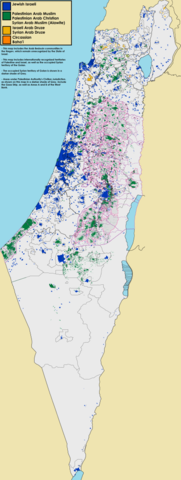 Ethnic majority by settlement (present): The map indicates the ethnic majority of settlements (cities, villages and other communities).
Ethnic majority by settlement (present): The map indicates the ethnic majority of settlements (cities, villages and other communities).
Boundaries

The boundaries of Palestine have varied throughout history. The Jordan Rift Valley (comprising Wadi Arabah, the Dead Sea and River Jordan) has at times formed a political and administrative frontier, even within empires that have controlled both territories. At other times, such as during certain periods during the Hasmonean and Crusader states for example, as well as during the biblical period, territories on both sides of the river formed part of the same administrative unit. During the Arab Caliphate period, parts of southern Lebanon and the northern highland areas of Palestine and Jordan were administered as Jund al-Urdun, while the southern parts of the latter two formed part of Jund Dimashq, which during the ninth century was attached to the administrative unit of Jund Filasteen (Template:Lang-ar).
The boundaries of the area and the ethnic nature of the people referred to by Herodotus in the 5th century BCE as Palaestina vary according to context. Sometimes, he uses it to refer to the coast north of Mount Carmel. Elsewhere, distinguishing the Syrians in Palestine from the Phoenicians, he refers to their land as extending down all the coast from Phoenicia to Egypt. Pliny, writing in Latin in the 1st century CE, describes a region of Syria that was "formerly called Palaestina" among the areas of the Eastern Mediterranean.
Since the Byzantine Period, the Byzantine borders of Palaestina (I and II, also known as Palaestina Prima, "First Palestine", and Palaestina Secunda, "Second Palestine"), have served as a name for the geographic area between the Jordan River and the Mediterranean Sea. Under Arab rule, Filastin (or Jund Filastin) was used administratively to refer to what was under the Byzantines Palaestina Secunda (comprising Judaea and Samaria), while Palaestina Prima (comprising the Galilee region) was renamed Urdunn ("Jordan" or Jund al-Urdunn).
Nineteenth-century sources refer to Palestine as extending from the sea to the caravan route, presumably the Hejaz-Damascus route east of the Jordan River valley. Others refer to it as extending from the sea to the desert. Prior to the Allied Powers victory in World War I and the Partitioning of the Ottoman Empire, which created the British mandate in the Levant, most of the northern area of what is today Jordan formed part of the Ottoman Vilayet of Damascus (Syria), while the southern part of Jordan was part of the Vilayet of Hejaz. What later became part of British Mandate Palestine was in Ottoman times divided between the Vilayet of Beirut (Lebanon) and the Sanjak of Jerusalem.
The Zionist Organization provided its definition of the boundaries of Palestine in a statement to the Paris Peace Conference in 1919. On the basis of a League of Nations mandate, the British administered Palestine after World War I, promising to establish a Jewish homeland.
The Palestinian National Charter describe the boundaries of the "homeland of the Arab Palestinian people" as those of Mandate Palestine, that is, excluding the Transjordan.
Demographics
Main article: Demographics of PalestineEarly demographics
Estimating the population of Palestine in antiquity relies on two methods – censuses and writings made at the times, and the scientific method based on excavations and statistical methods that consider the number of settlements at the particular age, area of each settlement, density factor for each settlement.
According to Magen Broshi, an Israeli archaeologist "... the population of Palestine in antiquity did not exceed a million persons. It can also be shown, moreover, that this was more or less the size of the population in the peak period—the late Byzantine period, around AD 600" Similarly, a study by Yigal Shiloh of The Hebrew University suggests that the population of Palestine in the Iron Age could have never exceeded a million. He writes: "... the population of the country in the Roman-Byzantine period greatly exceeded that in the Iron Age... If we accept Broshi's population estimates, which appear to be confirmed by the results of recent research, it follows that the estimates for the population during the Iron Age must be set at a lower figure."
Late Ottoman and British Mandate periods
In the middle of the 1st century of the Ottoman rule, i.e. 1550 AD, Bernard Lewis in a study of Ottoman registers of the early Ottoman Rule of Palestine reports:
From the mass of detail in the registers, it is possible to extract something like a general picture of the economic life of the country in that period. Out of a total population of about 300,000 souls, between a fifth and a quarter lived in the six towns of Jerusalem, Gaza, Safed, Nablus, Ramle, and Hebron. The remainder consisted mainly of peasants, living in villages of varying size, and engaged in agriculture. Their main food-crops were wheat and barley in that order, supplemented by leguminous pulses, olives, fruit, and vegetables. In and around most of the towns there was a considerable number of vineyards, orchards, and vegetable gardens.
According to Alexander Scholch, the population of Palestine in 1850 was about 350,000 inhabitants, 30% of whom lived in 13 towns; roughly 85% were Muslims, 11% were Christians and 4% Jews
According to Ottoman statistics studied by Justin McCarthy, the population of Palestine in the early 19th century was 350,000, in 1860 it was 411,000 and in 1900 about 600,000 of whom 94% were Arabs. In 1914 Palestine had a population of 657,000 Muslim Arabs, 81,000 Christian Arabs, and 59,000 Jews. McCarthy estimates the non-Jewish population of Palestine at 452,789 in 1882; 737,389 in 1914; 725,507 in 1922; 880,746 in 1931; and 1,339,763 in 1946.
In 1920, the League of Nations' Interim Report on the Civil Administration of Palestine stated that there were 700,000 people living in Palestine:
Of these, 235,000 live in the larger towns, 465,000 in the smaller towns and villages. Four-fifths of the whole population are Moslems. A small proportion of these are Bedouin Arabs; the remainder, although they speak Arabic and are termed Arabs, are largely of mixed race. Some 77,000 of the population are Christians, in large majority belonging to the Orthodox Church, and speaking Arabic. The minority are members of the Latin or of the Uniate Greek Catholic Church, or—a small number—are Protestants. The Jewish element of the population numbers 76,000. Almost all have entered Palestine during the last 40 years. Prior to 1850, there were in the country only a handful of Jews. In the following 30 years, a few hundreds came to Palestine. Most of them were animated by religious motives; they came to pray and to die in the Holy Land, and to be buried in its soil. After the persecutions in Russia forty years ago, the movement of the Jews to Palestine assumed larger proportions.
—
By 1948, the population had risen to 1,900,000, of whom 68% were Arabs, and 32% were Jews (UNSCOP report, including bedouin).
Current demographics
See also: Demographics of Israel, Demographics of the Palestinian territories, and Demographics of JordanAccording to Israel's Central Bureau of Statistics, as of May 2006, of Israel's 7 million people, 77% were Jews, 18.5% Arabs, and 4.3% "others". Among Jews, 68% were Sabras (Israeli-born), mostly second- or third-generation Israelis, and the rest are olim (immigrants) — 22% from Europe,the former Soviet republics, Russia, and the Americas, and 10% from Asia and Africa, including the Arab countries.
Of Israel's 7 million citizens, 516,569 Jewish ones live in enclaves referred to as Israeli settlements and outposts in various lands adjacent to the state of Israel occupied by Israel during the Six Day War.
According to Palestinian evaluations, the West Bank is inhabited by approximately 2.4 million Palestinians and the Gaza Strip by another 1.4 million. According to a study presented at The Sixth Herzliya Conference on The Balance of Israel's National Security, there are 1.4 million Palestinians in the West Bank. This study was criticised by demographer Sergio DellaPergola, who estimated 3.33 million Palestinians in the West Bank and Gaza Strip combined at the end of 2005. The Israeli Civil Administration put the number of Palestinians in the West Bank at 2,657,029 as of May 2012.
According to these Israeli and Palestinian estimates, the total population in Israel and the Palestinian territories stands between 9.8 and 10.8 million.
Jordan has a population of around 6,000,000 (2007 estimate). Long term Palestinian war refugees constitute approximately half of this number.
A report was released by the UN in August 2012 and Maxwell Gaylard, the UN Resident and Humanitarian Coordinator in the occupied Palestinian territory, explained at the launch of the publication: “Gaza will have half a million more people by 2020 while its economy will grow only slowly. In consequence, the people of Gaza will have an even harder time getting enough drinking water and electricity, or sending their children to school”. Gaylard present alongside Jean Gough, of the UN Children’s Fund (UNICEF), and Robert Turner, of the UN Relief and Works Agency for Palestinian Refugees in the Near East (UNRWA). The report projects that Gaza’s population will increase from 1.6 million people to 2.1 million people in 2020, leading to a density of more than 5,800 people per square kilometre.
Modern politics
Main articles: Palestinian people, Palestinian territories, State of Palestine, and Palestinian National Authority

 The region of Palestine gave its name to the historical mandate region, the State of Palestine as declared in 1988 and the areas of modern Palestinian government control.
The region of Palestine gave its name to the historical mandate region, the State of Palestine as declared in 1988 and the areas of modern Palestinian government control.
The region of Palestine is the eponym for the Palestinian people and the culture of Palestine, both of which are defined as relating to the whole historical region, usually defined as the localities within the border of Mandatory Palestine.
However, since the 1988 Palestinian Declaration of Independence, the term State of Palestine refers only to the West Bank and Gaza. This discrepancy was described by Mahmoud Abbas as a negotiated concession in a September 2011 speech to the United Nations: "... we agreed to establish the State of Palestine on only 22% of the territory of historical Palestine - on all the Palestinian Territory occupied by Israel in 1967."
The term Palestine is also sometimes used in a limited sense to refer to the parts of the Palestinian territories currently under the administrative control of the Palestinian National Authority, a quasi-governmental entity which governs parts of the State of Palestine under the terms of the Oslo Accords.
See also
- Israeli–Palestinian conflict
- Names of the Levant
- Outline of the Palestinian territories
- Place names of Palestine
- Palestinian People
- Palestinian Declaration of Independence
- Palestinian National Security Forces
- State of Palestine
- Land of Israel
- History of Israel
- Philistia
- Israeli-occupied territories
- Israeli settlement
References
- ^ de Geus, 2003, p. 7.
- ^ Encyclopedia of the Ottoman Empire, Bruce Alan Masters, Gábor Ágoston. Books.google.co.uk. Retrieved 17 August 2012.
- ^ Gideon Biger (2004). The Boundaries of Modern Palestine, 1840–1947. RoutledgeCurzon. passim.
- The Evolution of the Egypt-Israel Boundary: From Colonial Foundations to Peaceful Borders, International Boundaries Research Unit, Volume 1 Number 8
- Fahlbusch et al., 2005, p. 185.
- Ancient Records of Egypt: The first through the seventeenth dynasties, James Henry Breasted, page 24
- ^ Sharon, 1988, p. 4.
- ^ Room, 1997, p. 285.
- Carl S. Ehrlich "Philistines" The Oxford Guide to People and Places of the Bible. Ed. Bruce M. Metzger and Michael D. Coogan. Oxford University Press, 2001.
- Eberhard Schrader wrote in his seminal "Keilinschriften und Geschichtsforschung" ("KGF", in English "Cuneiform inscriptions and Historical Research") that the Assyrian tern "Palashtu" or "Pilistu" referred to the wider Palestine or "the East" in general, instead of "Philistia". See KGF p123-124 and Tiglath Pileser III by Abraham Samuel Anspacher, p48
- Jacobson, David M. (February 1999). Weinstein, James M. (ed.). "Palestine and Israel". Bulletin of the American Schools of Oriental Research (313). The American Schools of Oriental Research: 65–74. ISSN 0003-097X. JSTOR 1357617.
The earliest occurrence of this name in a Greek text is in the mid-fifth century b.c., Histories of Herodotus, where it is applied to the area of the Levant between Phoenicia and Egypt."..."The first known occurrence of the Greek word Palaistine is in the Histories of Herodotus, written near the mid-fifth century B.C. Palaistine Syria, or simply Palaistine, is applied to what may be identified as the southern part of Syria, comprising the region between Phoenicia and Egypt. Although some of Herodotus' references to Palestine are compatible with a narrow definition of the coastal strip of the Land of Israel, it is clear that Herodotus does call the "whole land by the name of the coastal strip."..."It is believed that Herodotus visited Palestine in the fifth decade of the fifth century B.C."..."In the earliest Classical literature references to Palestine generally applied to the Land of Israel in the wider sense.
{{cite journal}}:|access-date=requires|url=(help) and David Jacobson (May–June 2001). "When Palestine Meant Israel". BAR 27:03. Retrieved 2 March 2012.As early as the Histories of Herodotus, written in the second half of the fifth century B.C.E., the term Palaistinê is used to describe not just the geographical area where the Philistines lived, but the entire area between Phoenicia and Egypt—in other words, the Land of Israel. Herodotus, who had traveled through the area, would have had firsthand knowledge of the land and its people. Yet he used Palaistinê to refer not to the Land of the Philistines, but to the Land of Israel
- Jacobson, David M., Palestine and Israel, Bulletin of the American Schools of Oriental Research, No. 313 (Feb., 1999), pp. 65–74
- The Southern and Eastern Borders of Abar-Nahara Steven S. Tuell Bulletin of the American Schools of Oriental Research, No. 284 (Nov., 1991), pp. 51–57
- Herodotus' Description of the East Mediterranean Coast Anson F. Rainey Bulletin of the American Schools of Oriental Research, No. 321 (Feb., 2001), pp. 57–63
- In his work, Herodotus referred to the practice of male circumcision associated with the Hebrew people: "the Colchians, the Egyptians, and the Ethiopians, are the only nations who have practised circumcision from the earliest times. The Phoenicians and the Syrians of Palestine themselves confess that they learnt the custom of the Egyptians.... Now these are the only nations who use circumcision." The History of Herodotus
- Beloe, W., Rev., Herodotus, (tr. from Greek), with notes, Vol.II, London, 1821, p.269 "It should be remembered that Syria is always regarded by Herodotus as synonymous with Assyria. What the Greeks called Palestine the Arabs call Falastin, which is the Philistines of Scripture."
- Elyahu Green, Geographic names of places in Israel in Herodotos This is confirmed by George Rawlinson in the third book (Thalia) of The Histories where Palaestinian Syrians are part of the fifth tax district spanning the territory from Phoenicia to the borders of Egypt, but excludes the kingdom of Arabs who were exempt from tax for providing the Assyrian army with water on its march to Egypt. These people had a large city called Cadytis, identified as Jerusalem.
- "Meteorology By Aristotle". Classics.mit.edu. Retrieved 11 December 2011.
- ^ Robinson, Edward, Physical geography of the Holy Land, Crocker & Brewster, Boston, 1865, p.15. Robinson, writing in 1865 when travel by Europeans to the Ottoman Empire became common asserts that, "Palestine, or Palestina, now the most common name for the Holy Land, occurs three times in the English version of the Old Testament; and is there put for the Hebrew name פלשת, elsewhere rendered Philistia. As thus used, it refers strictly and only to the country of the Philistines, in the southwest corner of the land. So, too, in the Greek form, Παλαςτίνη), it is used by Josephus. But both Josephus and Philo apply the name to the whole land of the Hebrews ; and Greek and Roman writers employed it in the like extent."
- Studies in Hellenistic Judaism :Louis H. Feldman
- The Hellenistic settlements in Syria, the Red Sea Basin, and North Africa :Getzel M. Cohen
- ^ Feldman, Louis (1990). "Some Observations on the Name of Palestine". Hebrew Union College, Cincinnati, OH. 61: 1–23. Retrieved 12 February 2011.
- Lehmann, Clayton Miles (Summer 1998). "Palestine: History: 135–337: Syria Palaestina and the Tetrarchy". The On-line Encyclopedia of the Roman Provinces. University of South Dakota. Retrieved 6 July 2008.
- Sharon, 1998, p. 4. According to Moshe Sharon: "Eager to obliterate the name of the rebellious Judaea", the Roman authorities (General Hadrian) renamed it Palaestina or Syria Palaestina.
- Jacobson, David (1999). "Palestine and Israel". Bulletin of the American Schools of Oriental Research. JSTOR 1357617.
- "The King James Bible". blue letter bible. Retrieved 17 January 2014.
2 Samuel 8:1 And after this it came to pass that David smote the Philistines, and subdued them: and David took Methegammah out of the hand of the Philistines.
{{cite web}}:|first=missing|last=(help) - Lewis, 1993, p. 153.
- Jacobson, David M. (February 1999). Weinstein, James M. (ed.). "Palestine and Israel". Bulletin of the American Schools of Oriental Research (313). The American Schools of Oriental Research: 65–74. ISSN 0003-097X. JSTOR 1357617.
{{cite journal}}:|access-date=requires|url=(help) - ^ Jobling, David; Rose, Catherine (1996), "Reading as a Philistine", in Mark G. Brett (ed.), Ethnicity and the Bible, BRILL, p. 404, ISBN 9780391041264,
Rabbinic sources insist that the Philistines of Judges and Samuel were different people altogether from the Philistines of Genesis. (Midrash Tehillim on Psalm 60 (Braude: vol. 1, 513); the issue here is precisely whether Israel should have been obliged, later, to keep the Genesis treaty.) This parallels a shift in the Septuagint's translation of Hebrew pelistim. Before Judges, it uses the neutral transliteration phulistiim, but beginning with Judges it switches to the pejorative allophuloi.
- Drews 1998, p. 49 harvnb error: no target: CITEREFDrews1998 (help): "Our names ‘Philistia’ and ‘Philistines’ are unfortunate obfuscations, first introduced by the translators of the LXX and made definitive by Jerome’s Vg. When turning a Hebrew text into Greek, the translators of the LXX might simply—as Josephus was later to do—have Hellenized the Hebrew פְּלִשְׁתִּים as Παλαιστίνοι, and the toponym פְּלִשְׁתִּ as Παλαιστίνη. Instead, they avoided the toponym altogether, turning it into an ethnonym. As for the ethnonym, they chose sometimes to transliterate it (incorrectly aspirating the initial letter, perhaps to compensate for their inability to aspirate the sigma) as φυλιστιιμ, a word that looked exotic rather than familiar, and more often to translate it as άλλόφυλοι. Jerome followed the LXX’s lead in eradicating the names, ‘Palestine’ and ‘Palestinians’, from his Old Testament, a practice adopted in most modern translations of the Bible."
- Drews 1998, p. 51 harvnb error: no target: CITEREFDrews1998 (help): "The LXX’s regular translation of פְּלִשְׁתִּים into άλλόφυλοι is significant here. Not a proper name at all, allophyloi is a generic term, meaning something like ‘people of other stock’. If we assume, as I think we must, that with their word allophyloi the translators of the LXX tried to convey in Greek what p'lištîm had conveyed in Hebrew, we must conclude that for the worshippers of Yahweh p'lištîm and b'nê yiśrā'ēl were mutually exclusive terms, p'lištîm (or allophyloi) being tantamount to ‘non-Judaeans of the Promised Land’ when used in a context of the third century BCE, and to ‘non-Israelites of the Promised Land’ when used in a context of Samson, Saul and David. Unlike an ethnonym, the noun פְּלִשְׁתִּים normally appeared without a definite article."
- ^ Kaegi, 1995, p. 41.
- Marshall Cavendish, 2007, p. 559.
- Gudrun Krämer (2008) A History of Palestine: From the Ottoman Conquest to the Founding of the State of Israel Translated by Gudrun Krämer and Graham Harman Princeton University Press, ISBN 0-691-11897-3 p.16
- Judea
- The Legal Foundation and Borders of Israel Under International Law, Howard Grief. Books.google.co.uk. Retrieved 17 August 2012.
- Finkelstein and Silberman, Free Press, New York, 2001, 385 pp., ISBN 0-684-86912-8, p 107
- "Cambridge History of Judaism". Cambridge.org. p. 210. Retrieved 16 August 2011. "In both the Idumaean and the Ituraean alliances, and in the annexation of Samaria, the Judaeans had taken the leading role. They retained it. The whole political–military–religious league that now united the hill country of Palestine from Dan to Beersheba, whatever it called itself, was directed by, and soon came to be called by others, 'the Ioudaioi'"
- A History of the Jewish People, edited by Haim Hillel Ben-Sasson, page 226, "The name Judea no longer referred only to...."
- In a 2011 review of the state of modern scholarship, Bart Ehrman (a secular agnostic) wrote: "He certainly existed, as virtually every competent scholar of antiquity, Christian or non-Christian, agrees" B. Ehrman, 2011 Forged : writing in the name of God ISBN 978-0-06-207863-6. page 285
- Greatrex-Lieu(2002), II, 196
- ^ Gideon Avni,The Byzantine-Islamic Transition in Palestine: An Archaeological Approach, Oxford University Press, 2014 passim, pp.,314,336. summarizing three decades of archaeological research. Cite error: The named reference "Avni" was defined multiple times with different content (see the help page).
- Bernard Flusin, ‘Palestinia Hagiography (Fourth-Eighth Centuries),’ in Stephanos Efthymiadis (ed.) The Ashgate Research Companion to Byzantine Hagiography, Ashgate Publishing, vol. 1 2011, pp. 199-226, p. 215: ’The religious situation also evolved under the new masters. Christianity did remain the majorityu religion, but it lost the privileges it had enjoyed.’
- Anthony O'Mahony, The Christian communities of Jerusalem and the Holy Land: studies in history, religion and politics, University of Wales Press, 2003, p. 14: ‘Before the Muslim conquest, the population of Palestine was overwhelmingly Christian, albeit with a sizeable Jewish community.’
- The earlier view, exemplifed by the writings of Moshe Gil, argued for a Jewish-Samaritan majority at the time of conquest. See Moshe Gil, A History of Palestine, 634–1099, Cambridge University Press (1997 ), p. 3: "We may reasonably state that at the time if the Muslim conquest, a large Jewish population still lived in Palestine. We do not know whether they formed the majority but we may assume with some certainly that they did so when grouped together with the Samaritans."
- Moshe Gil, A History of Palestine, 634–1099, Cambridge University Press, 1997 pp. 134–136.
- Daniel W. Brown, A New Introduction to Islam, Wiley-Blackwell, 2nd.ed. 2011, p. 122: 'the first great Islamic architectural achievement.'
- Alan Walmsley,'Production, exchange and regional trade in the Islamic Wast Mediterranean: old structures, new systems?, in Inge Lyse Hansen,Chris Wickham (eds.) The Long Eighth Century:Production, Distribution and Demand, BRILL, 2000, pp. 265-343, p. 290.
- Moshe Gil, A History of Palestine, 634–1099, Cambridge University Press, 1997, p. 329.
- Gil, A History of Palestine, pp. 306ff. and p. 307 n. 71; p. 308 n. 73
- Gil, A History of Palestine, p. 324.
- Gil, A History of Palestine, p. 336.
- Sanford R. Silverburg, 'Diplomatic Recognition of States in statu nascendi:THe Case of Palestine,' in Sanford R. Silverburg (ed.), Palestine and International Law: Essays on Politics and Economics, McFarland, 2009, pp. 9–36, p. 29 n. 32.
- Ilan Pappe (31 March 1999). The Israel/Palestine Question. Taylor & Francis. pp. 38–. ISBN 978-0-415-16948-6. Retrieved 23 August 2012.
- "Q&A: Palestinians' upgraded UN status". BBC News. BBC. 30 November 2012. Retrieved 22 January 2013.
- According to the Jewish Encyclopedia published between 1901 and 1906: "Palestine extends, from 31° to 33° 20′ N. latitude. Its southwest point (at Raphia = Tell Rifaḥ, southwest of Gaza) is about 34° 15′ E. longitude, and its northwest point (mouth of the Liṭani) is at 35° 15′ E. longitude, while the course of the Jordan reaches 35° 35′ to the east. The west-Jordan country has, consequently, a length of about 150 English miles from north to south, and a breadth of about 23 miles (37 km) at the north and 80 miles (129 km) at the south. The area of this region, as measured by the surveyors of the English Palestine Exploration Fund, is about 6,040 square miles (15,644 km). The east-Jordan district is now being surveyed by the German Palästina-Verein, and although the work is not yet completed, its area may be estimated at 4,000 square miles (10,360 km). This entire region, as stated above, was not occupied exclusively by the Israelites, for the plain along the coast in the south belonged to the Philistines, and that in the north to the Phoenicians, while in the east-Jordan country, the Israelitic possessions never extended farther than the Arnon (Wadi al-Mujib) in the south, nor did the Israelites ever settle in the most northerly and easterly portions of the plain of Bashan. To-day the number of inhabitants does not exceed 650,000. Palestine, and especially the Israelitic state, covered, therefore, a very small area, approximating that of the state of Vermont." From the Jewish Encyclopedia Boundaries and Extent
- According to the Encyclopædia Britannica Eleventh Edition (1911), Palestine is:
- " geographical name of rather loose application. Etymological strictness would require it to denote exclusively the narrow strip of coast-land once occupied by the Philistines, from whose name it is derived. It is, however, conventionally used as a name for the territory which, in the Old Testament, is claimed as the inheritance of the pre-exilic Hebrews; thus it may be said generally to denote the southern third of the province of Syria.
- Except in the west, where the country is bordered by the Mediterranean Sea, the limit of this territory cannot be laid down on the map as a definite line. The modern subdivisions under the jurisdiction of the Ottoman Empire are in no sense conterminous with those of antiquity, and hence do not afford a boundary by which Palestine can be separated exactly from the rest of Syria in the north, or from the Sinaitic and Arabian deserts in the south and east; nor are the records of ancient boundaries sufficiently full and definite to make possible the complete demarcation of the country. Even the convention above referred to is inexact: it includes the Philistine territory, claimed but never settled by the Hebrews, and excludes the outlying parts of the large area claimed in Num. xxxiv. as the Hebrew possession (from the " River of Egypt " to Hamath). However, the Hebrews themselves have preserved, in the proverbial expression " from Dan to Beersheba " (Judg. xx.i, &c.), an indication of the normal north-and-south limits of their land; and in defining the area of the country under discussion it is this indication which is generally followed.
- Taking as a guide the natural features most nearly corresponding to these outlying points, we may describe Palestine as the strip of land extending along the eastern shore of the Mediterranean Sea from the mouth of the Litany or Kasimiya River (33° 20' N.) southward to the mouth of the Wadi Ghuzza; the latter joins the sea in 31° 28' N., a short distance south of Gaza, and runs thence in a south-easterly direction so as to include on its northern side the site of Beersheba. Eastward there is no such definite border. The River Jordan, it is true, marks a line of delimitation between Western and Eastern Palestine; but it is practically impossible to say where the latter ends and the Arabian desert begins. Perhaps the line of the pilgrim road from Damascus to Mecca is the most convenient possible boundary. The total length of the region is about 140 m (459.32 ft); its breadth west of the Jordan ranges from about 23 m (75.46 ft) in the north to about 80 m (262.47 ft) in the south."
- Kamal Suleiman Salibi (1993). The Modern History of Jordan. I.B.Tauris. pp. 17–18. ISBN 1-86064-331-0.
- Herodotus, The Histories Bk 7.89
- cf. Pliny, Natural History V.66 and 68.
- "Palestinim, Am Behivatsrut," by Kimmerling, Baruch, and Joel S. Migdal – Keter Publishing, ISBN 965-07-0797-2
- "Zionist Organization Statement on Palestine, Paris Peace Conference, (February 3, 1919) The Boundaries of Palestine". Jewishvirtuallibrary.org. Retrieved 24 August 2010.
- "Statement of the Zionist Organization Regarding Palestine Presented to the Paris Peace Conference (with proposed map of Zionist borders) February 3, 1919". Mideastweb.org. Retrieved 24 August 2010.
- "Middle East Documents Balfour Declaration". Mideastweb.org. Retrieved 16 June 2009.
- Ibrahim Abu-Lughod, "Territorially-based Nationalism and the Politics of Negation", p. 199. In Said and Hitchens, 2001.
- Magen Broshi, The Population of Western Palestine in the Roman-Byzantine Period, Bulletin of the American Schools of Oriental Research, No. 236, p. 7, 1979.
- Yigal Shiloh, The Population of Iron Age Palestine in the Light of a Sample Analysis of Urban Plans, Areas, and Population Density, Bulletin of the American Schools of Oriental Research, No. 239, p.33, 1980.
- Bernard Lewis, Studies in the Ottoman Archives—I, Bulletin of the School of Oriental and African Studies, University of London, Vol. 16, No. 3, pp. 469–501, 1954
- Scholch, 1985, p. 503.
- McCarthy, 1990, p. 26.
- McCarthy, 1990.
- McCarthy, 1990, pp. 37–38.
- Interim Report on the Civil Administration of Palestine
- Central Bureau of Statistics, Government of Israel. "Population, by religion and population group" (PDF). Retrieved 8 April 2006.
- Central Bureau of Statistics, Government of Israel. "Jews and others, by origin, continent of birth and period of immigration" (PDF). Retrieved 8 April 2006.
- Israel Central Bureau of Statistics:
- Jerusalem Institute for Israel Studies:
- Foundation for Middle East Peace:
- Bennett Zimmerman & Roberta Seid (23 January 2006). "Arab Population in the West Bank & Gaza: The Million Person Gap". American-Israel Demographic Research Group. Retrieved 27 September 2006.
- Sergio DellaPergola (Winter 2007, No. 27). "Letter to the Editor". Azure. Archived from the original on 27 September 2007. Retrieved 11 January 2007.
{{cite web}}: Check date values in:|date=(help) - Wrong Number
- How many Palestinians actually live in the West Bank?
- Archived 2007-04-11 at the Wayback Machine. Retrieved 22 May 2007.
- CIA World Factbook. Retrieved 22 May 2007.
- Assessment for Palestinians in Jordan, Minorities at Risk. Retrieved 22 May 2007.
- "Lack of sufficient services in Gaza could get worse without urgent action, UN warns". UN News Centre. UN Publications. 27 August 2012. Retrieved 22 January 2013.
- Abbas speech transcript
Bibliography
Works written or compiled since 1945
|
|
Works written before 1918
- Le Strange, Guy (1890) Palestine under the Moslems: a description of Syria and the Holy Land from A.D. 650 to 1500; translated from the works of the mediaeval Arab geographers. : Alexander P. Watt for the Committee of the Palestine Exploration Fund; Boston MA: Houghton Mifflin (Reprinted by Khayats, Beirut, 1965, with a new introd. by Walid Khalidy.; AMS Press, New York, 1975) ISBN 0-404-56288-4
- Twain, Mark (1867) Innocents Abroad. London: Penguin Classics. ISBN 0-14-243708-5
Further reading
- Baly, Denis. Palestine and the Bible, in series, World Christian Books, Second Series, no. 33. London: United Society for Christian Literature: Lutterworth Press, 1960. N.B.: Concerns the geography, anthropology, antiquities, etc. of ancient Palestine.
- Hadawi, Sami. Bitter Harvest: A Modern History of Palestine. New York City: Olive Branch Press, 1998 (revised).
External links
| This article's use of external links may not follow Misplaced Pages's policies or guidelines. Please improve this article by removing excessive or inappropriate external links, and converting useful links where appropriate into footnote references. (November 2010) (Learn how and when to remove this message) |
- www.palestinecenter.org – A website with current and historical information about Palestine
- Palestine Royal Commission Report (the Peel Report) (London, 1937) Jewishvirtuallibrary.org
- www.mideastweb.org – A website with a wealth of statistics regarding population in Palestine
- Bibliography for Arabophone Christianity in Israel and Palestine
- Coins and Banknotes of Palestine under the British Mandate
- WorldStatesmen – Maps, flags, chronology, see Israel and Palestinian National Authority
- hWeb – Israel-Palestine in Maps
- Palestine Fact Sheet from the Common Language Project
- 1911 Encyclopedia description of Palestine
- Liberal Democrat Friends of Palestine
- Key Development Forecasts for Palestine from International Futures
Maps
| Palestinian nationalism and the Occupied Palestinian Territory | |||||||
|---|---|---|---|---|---|---|---|
| |||||||
| Palestine region articles | |||||||||
|---|---|---|---|---|---|---|---|---|---|
| History | 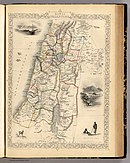 | ||||||||
| Abrahamic holy places |
| ||||||||
| Regimes |
| ||||||||
| People and things in the Quran | |||||||||||||||||||||||||||||||||||||||||||||||||||||||||||||||||||||||||||||
|---|---|---|---|---|---|---|---|---|---|---|---|---|---|---|---|---|---|---|---|---|---|---|---|---|---|---|---|---|---|---|---|---|---|---|---|---|---|---|---|---|---|---|---|---|---|---|---|---|---|---|---|---|---|---|---|---|---|---|---|---|---|---|---|---|---|---|---|---|---|---|---|---|---|---|---|---|---|
| |||||||||||||||||||||||||||||||||||||||||||||||||||||||||||||||||||||||||||||
| |||||||||||||||||||||||||||||||||||||||||||||||||||||||||||||||||||||||||||||
| |||||||||||||||||||||||||||||||||||||||||||||||||||||||||||||||||||||||||||||
| |||||||||||||||||||||||||||||||||||||||||||||||||||||||||||||||||||||||||||||
| Note: Names are sorted alphabetically. Standard form: Islamic name / Biblical name (title or relationship) | |||||||||||||||||||||||||||||||||||||||||||||||||||||||||||||||||||||||||||||
31°37′31″N 35°08′43″E / 31.6253°N 35.1453°E / 31.6253; 35.1453
Categories:
